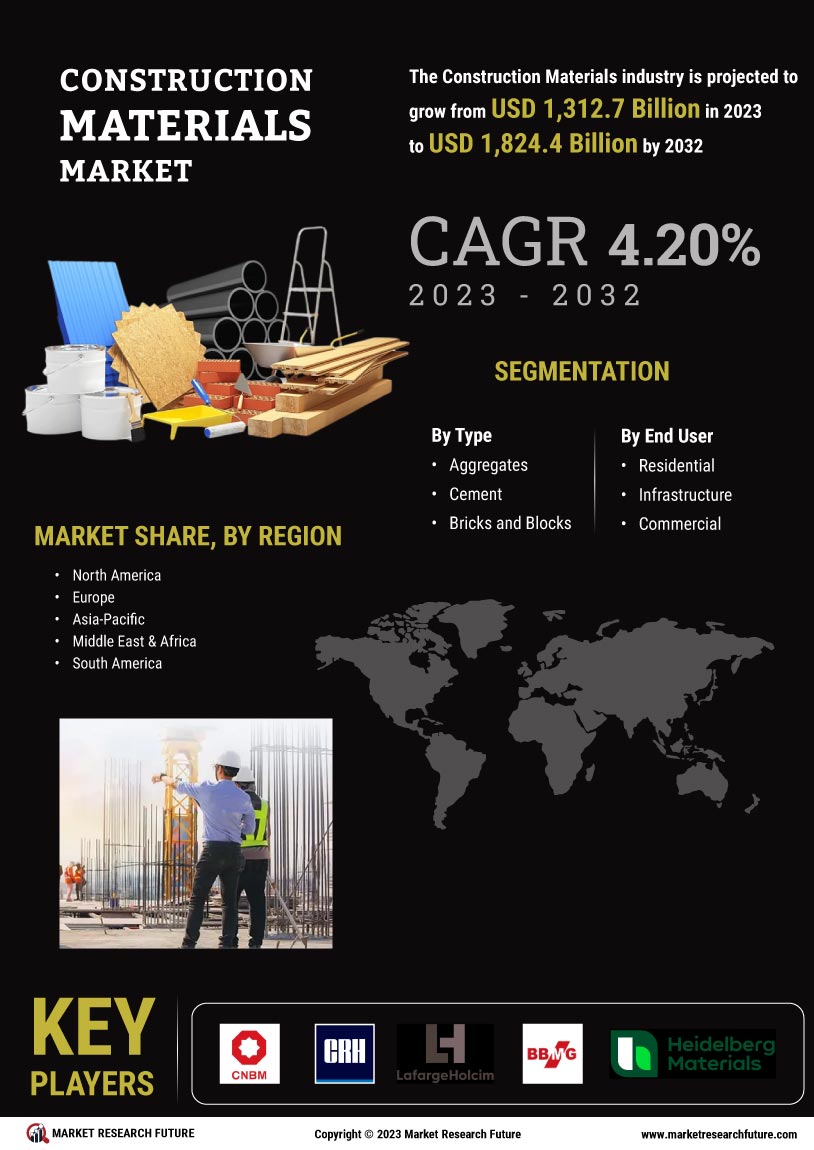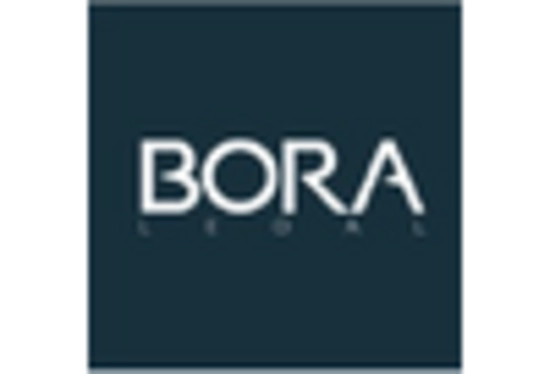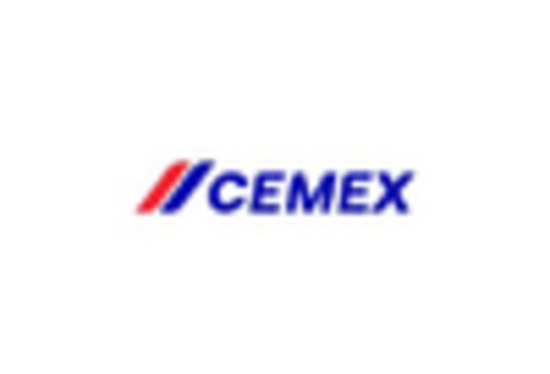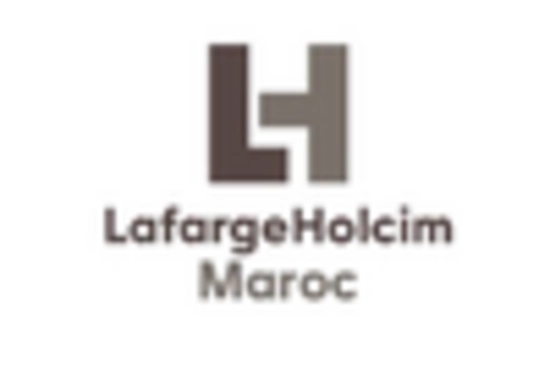Sustainability Initiatives
The Construction Materials Market is increasingly influenced by sustainability initiatives. As environmental concerns rise, there is a growing demand for eco-friendly materials. This shift is evident in the increasing use of recycled materials and sustainable sourcing practices. For instance, the market for green building materials is projected to reach USD 500 billion by 2027, indicating a robust growth trajectory. Companies are investing in research and development to create innovative materials that minimize environmental impact. This trend not only aligns with regulatory requirements but also appeals to environmentally conscious consumers. As a result, businesses that prioritize sustainability are likely to gain a competitive edge in the Construction Materials Market.
Technological Advancements
Technological advancements play a pivotal role in shaping the Construction Materials Market. Innovations such as 3D printing and advanced manufacturing techniques are revolutionizing material production. For example, the adoption of 3D printing technology is expected to reduce material waste by up to 30%, thereby enhancing efficiency. Additionally, smart materials that respond to environmental changes are gaining traction. The integration of technology in construction processes is not only improving the quality of materials but also reducing costs. As companies embrace these advancements, they are likely to enhance their market position and meet the evolving demands of consumers in the Construction Materials Market.
Economic Growth and Investment
Economic growth and investment are fundamental drivers of the Construction Materials Market. As economies expand, there is a corresponding increase in construction activities, leading to heightened demand for various materials. Recent data indicates that construction spending is projected to grow at a compound annual growth rate of 5% over the next five years. This growth is particularly evident in sectors such as residential, commercial, and infrastructure development. Increased investment in construction projects not only stimulates demand for materials but also encourages innovation and competition among suppliers. As a result, the Construction Materials Market is poised for robust growth in the coming years.
Regulatory Compliance and Standards
Regulatory compliance and standards are critical factors influencing the Construction Materials Market. Governments worldwide are implementing stringent regulations to ensure safety, quality, and environmental sustainability in construction practices. Compliance with these regulations often necessitates the use of certified materials, which can drive up demand for specific products. For instance, materials that meet LEED certification standards are increasingly sought after in the market. This regulatory landscape compels manufacturers to innovate and adapt their offerings to meet evolving standards. Consequently, companies that proactively address compliance issues are likely to enhance their reputation and market share in the Construction Materials Market.
Urbanization and Infrastructure Growth
Urbanization and infrastructure growth are driving forces in the Construction Materials Market. Rapid urbanization is leading to increased demand for residential and commercial buildings, which in turn fuels the need for construction materials. According to recent estimates, urban areas are expected to house 68% of the world population by 2050, necessitating significant infrastructure development. This trend is particularly pronounced in emerging economies, where investments in infrastructure are surging. As cities expand, the demand for durable and high-quality construction materials is likely to rise, presenting opportunities for manufacturers in the Construction Materials Market.


















Leave a Comment